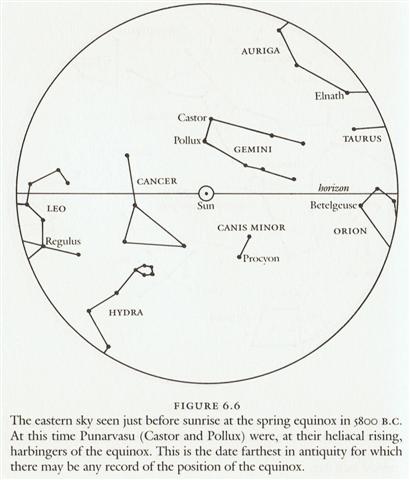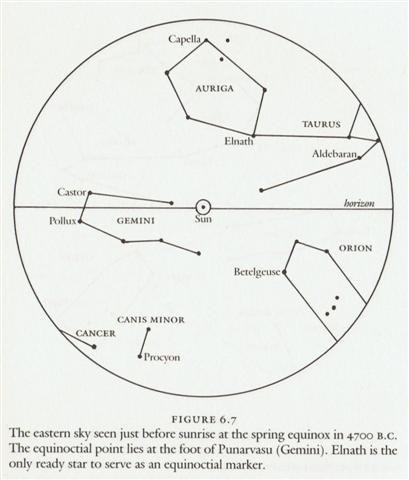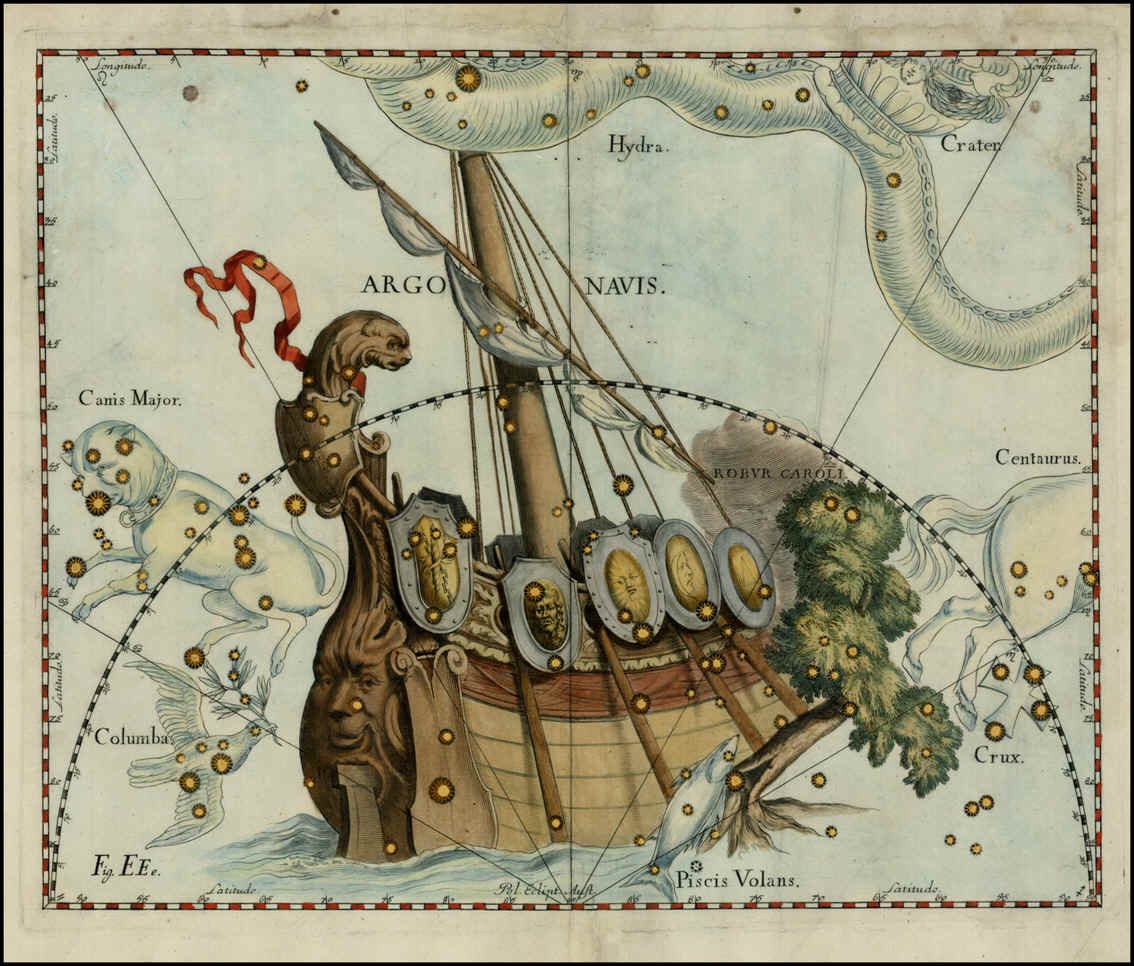61. The Explorers
landed at Hanga Te Pau and went up to the top of
the hill close by:
| Makoi named the place Hanga Te Pau, 'the landing site of Ira'. So that they would remember (? he aringa, literally, 'as face'), the open side of Hanga Te Pau was given this name. |
he nape mai a Makoi.i te ingoa.ko hanga te pau ko te tomonga o Ira.he aringa.ko mua a hanga te pau.i nape ai te ingoa. |
| Ira got up. They all climbed to the top of the hill. |
he ea.a Ira.he iri he oho ki runga anake. |
| They climbed up on the tenth day of the month of June 'Maro'. |
i te angahuru o te ra o te maro i iri ai. |
The
name
suggests
a
place
with
very
little
water
remaining:
| Pau 1. To run out (food, water): ekó pau te kai, te vai, is said when there is an abundance of food or water, and there is no fear of running out. Puna pau, a small natural well near the quarry where the 'hats' (pukao) were made; it was so called because only a little water could be drawn from it every day and it ran dry very soon. 2. Va'e pau, clubfoot. Paupau: Curved. Vanaga.
1. Hakapau, to pierce (cf. takapau, to thrust into). Pau.: pau, a cut, a wound, bruised, black and blue. 2. Resin. Mq.: epau, resin. Ta.: tepau, gum, pitch, resin. (Paupau) Hakapaupau, grimace, ironry, to grin. 3. Paura (powder), gunpowder. 4. Pau.: paupau, breathless. Ta.: paupau, id. 5. Ta.: pau, consumed, expended. Sa.: pau, to come to an end. Ma.: pau, finished. 6. Ta.: pau, to wet one another. Mq.: pau, to moisten. Churchill.
Paua or pāua is the Māori name given to three species of large edible sea snails, marine gastropod molluscs which belong to the family Haliotidae (genus Haliotis), known in the USA as abalone, and in the UK as ormer shells ... Wikipedia |
...
There
was
no
water
in
the
village.
The
lakes
and
rivers
were
dry.
Raven
and
Crow,
two
young
girls
who
were
having
their
first
menstrual
courses,
were
told
to
go
and
draw
water
from
the
ocean.
Finding
the
journey
too
long,
Raven
decided
just
to
urinate
into
her
basket-bucket.
She
decieved
no
one
and
was
severly
scolded.
Crow
returned
much
later
but
with
drinking
water.
As a
punishment,
Raven
was
condemned
never
to
find
water
in
the
summer;
only
in
winter
would
she
find
something
to
drink.
For
that
reason
the
Raven
never
drinks
during
the
hot
months;
she
speaks
with
a
raucous
voice
because
of
her
dry
throat
...
...
In
the
deep
night
before
the
image
[of
Lono]
is
first
seen,
there
is a
Makahiki
ceremony
called
'splashing-water'
(hi'uwai). Kepelino
tells
of
sacred
chiefs
being
carried
to
the
water
where
the
people
in
their
finery
are
bathing;
in
the
excitement
created
by
the
beauty
of
their
attire,
'one
person
was
attracted
to
another,
and
the
result',
says
this
convert
to
Catholicism,
'was
by
no
means
good'
...
9
days
previously
the
Sun
had
reached
Castor
-
a
hairy
creature who
built
his
house
down
below
the
surface
of
the
water
-
and
this
was
according
to
Manuscript
E
also
the
day
when
the
bow
of
the canoe
of
Ira
touched
land
again.

"They
are
known
for
their
alarm
signal:
when
startled
or
frightened,
a
swimming
beaver
will
rapidly
dive
while
forcfully
slapping
the
water
with
its
broad
tail,
audible
over
great
distances
above
and
below
water."
(Wikipedia)
|
MAY 8 |
9 |
10 (130) |
11 |
12 |
13 (*53) |
 |
 |
 |
 |
 |
 |
| Ga2-18 |
Ga2-19 |
Ga2-20 (50) |
Ga2-21 |
Ga2-22 |
Ga2-23 |
|
Ghost-23 (?)
ρ Gemini (?) (112.1),
Eskimo Nebula =
NGC2392 Gemini
(112.2) |
Al Dhirā'-5 /
Punarvasu-7 /
Mash-mashu-Mahrū-10
(Western One of the Twins)
CASTOR
= α Gemini
(113.4) |
ANA-TAHUA-VAHINE-O-TOA-TE-MANAVA-7
(Pillar for elocution) υ Gemini (114.0),
MARKAB PUPPIS = κ
Puppis (114.7), ο
Gemini (114.8),
PROCYON = α
Canis Minoris (114.9) |
α Monocerotis
(115.4), σ Gemini (115.7) |
Mash-mashu-arkū-11 (Eastern One of the Twins) κ Gemini (116.1),
POLLUX
= β Gemini (116.2), π
Gemini (116.9) |
AZMIDISKE = ξ Puppis
(117.4) |
| July 11 |
12 (193) |
13 (*114) |
14 |
15 |
16 |
|
°July 7 |
8 |
9 |
10 |
11 (*112) |
12 (193) |
|
'June 14 |
15 |
16 |
17 (168) |
18 |
19 (*90) |
|
"May 31 |
Maro 1 (*72) |
2 |
3 (154) |
4 |
5 |
Pollux
was
the
Eastern
One
of
the
Twins,
which
should
mean
his
place
was
in
the
east
at
the
rising
Sun.
Lux
is
obviously
equivalent
to
Light.
Castor
had
therefore
to
be at
the
opposite
corner,
at
the
horizon
in
the
west.
Far
back
in
time
the
Gemini
twins
could
have
defined
where
the
summer
half
of
the
year
was
ending
(at
Castor)
and
then
beginning
anew
(at
Pollux).
...
In
Hindu
legend
there
was
a
mother
goddess
called
Aditi,
who
had
seven
offspring.
She
is
called
'Mother
of
the
Gods'.
Aditi,
whose
name
means
'free,
unbounded,
infinity'
was
assigned
in
the
ancient
lists
of
constellations
as
the
regent
of
the
asterism
Punarvasu.
Punarvasu
is
dual
in
form
and
means
'The
Doublegood
Pair'.
The
singular
form
of
this
noun
is
used
to
refer
to
the
star
Pollux.
It
is
not
difficult
to
surmise
that
the
other
member
of
the
Doublegood
Pair
was
Castor.
Then
the
constellation
Punarvasu
is
quite
equivalent
to
our
Gemini,
the
Twins.
In
far
antiquity
(5800
B.C.)
the
spring
equinoctial
point
was
predicted
by
the
heliacal
rising
of
the
Twins
(see
fig.
6.6).
By
4700
B.C.
the
equinox
lay
squarely
in
Gemini
(fig.
6.7).


... On the twenty-fifth day
of the first month (Vaitu Nui), Ira and
Makoi set sail; on the first day of June ('Maro'), the bow of
Ira's canoe touched land again.
Ira's
canoe appeared on the distant horizon, came closer on its course, and
sailed along, and finally (one) could see the
(new home) land.
The canoe reached the islets (off the coast), and Ira saw that
there were three such islets. Ira said, 'Hey you, crew of young
men, the vision of Hau Maka, our father, which he revealed to me,
has come true. There are 'the handsome sons of Te Taanga, who are
standing in the water', for this is the name that the dream soul of
Hau Maka gave them.
Unforgotten (? kai viri kai viri) are they, these three. And
therefore this is the (right) land lying there; this is Te Pito O Te
Kainga, which also received its name from the dream soul.'
(Manuscript E p. 17.)
|
Unforgotten are they, these three. |
kai viri kai viri.ko raua ana a totoru. |
p. 17 |
|
And therefore this is the (right) land lying there; |
peira tokoa te kainga e moe mai era |
|
this is Te Pito O Te Kainga, which also received its name from the dream soul. |
ko te pito o te kainga i nape ai e toona kuhane. |
|
The canoe continued its exploration and in a sweep sailed on to Hanga Te Pau. |
hokoou.he rarama he oho te vaka he vari ki hanga.te pau |
|
They went ashore and took |
he tomo ki uta.he too |
|
the food with them. |
i te kai ki uta. |
p. 18 |
|
They pulled the canoe onto the beach and left it there. |
hee totoi i te vaka ki uta he hakarere. |
|
Ira sat down with all the other (companions) |
he noho a ira anake. |
...
When
the
Explorers
left
their
old
homeland
in
Vaitu
Nui
25
this
was
probably
corresponding
to
the
date
"April
25
(115),
and
at
the
time
of
Gregory
XIII
Cursa
would
have
risen
with
the
Sun
41 -
4 =
37
days
later,
in
°June
1
(152).
When
the
Explorers
reached
Easter
Island
it
was
in
Maro
1
("June
1).
We
can
therefore
guess
the
sea-voyage
of
the
Explorers
-
which
took
37
days
=
Maro
1
(152)
-
Vaitu
Nui
25
(115)
-
should
be
understood
as
alluding
to
the
precessional
distance
to
their
old
homeland
(Hiva),
i.e.
from
the
time
of
Bharani
to
the
time
of
Gregory
XIII.
| Dates according to Manuscript E - Explorers: |
| Departure from Hiva |
Sea voyage |
Arrival |
| Vaitu Nui 25 (115) |
152 - 115 = 37 days |
Maro 1 (152) |
| "April 25 (115) |
(*72 - *35) - (41 - 4) = 0 |
°June 1 (152) |
| CURSA (*76) |
CURSA (*76) |
| Dates according to Manuscript E - Hotu A Matua: |
| Departure from Hiva |
Sea voyage |
Arrival |
| Hora Nui 2 (245) |
288 - 245 = 43 days |
Tangaroa Uri 15 (288) |
| °September 2 (245 = 152 + 93) |
*249 - *169 = 80 |
October 15 (*249 = *76 + 173) |
| ZOSMA, COXA (*169) |
ANTARES (*249) |
The
bow
of
Ira's
canoe
made
landfall
4
days
before
maitaki
in
Ca5-12:
| time of Gemini |
 |
 |
 |
 |
| Ca5-5 |
Ca5-6 (111) |
Ca5-7 |
Ca5-8 |
| kua iri i te rakau |
ihe tamaiti |
erua mago |
| CLOSE TO THE FULL MOON: |
| *110 |
*111 |
*112 |
CASTOR (*113) |
| July 9 |
10 |
11 |
12 (193) |
| 'June 12 |
13 |
14 |
15 (166) |
| "May 29 |
30 (150) |
31 |
Maro 1 (*72) |
| MAY 6 |
7 |
8 |
9 (129) |
| Iri 1. To go up; to go in a boat on the sea (the surface of which gives the impression of going up from the coast): he-eke te tagata ki ruga ki te vaka, he-iri ki te Hakakaiga, the men boarded the boat and went up to Hakakainga. 2. Ka-iri ki puku toiri ka toiri. Obscure expression of an ancient curse. Vanaga.
Iri-are, a seaweed. Vanaga. |
| time of Gemini |
 |
 |
 |
| Ca5-9 |
Ca5-10 |
Ca5-11 (116) |
| te hokohuki erua |
te marama |
| CLOSE TO THE FULL MOON: |
| *114 |
*115 |
POLLUX (*116) |
| July 13 |
14 |
15 (196) |
| 'June 16 |
17 (168) |
18 |
| "June 2 |
3 (154) |
4 (*75) |
| MAY 10 (130) |
11 |
12 (*52) |
 |
 |
 |
 |
 |
| Ca5-12 |
Ca5-13 (118) |
Ca5-14 |
Ca5-15 |
Ca5-16 (121) |
| te maitaki |
te henua |
kua haga te mea ke |
manu puoko i tona ahi |
kua heu te huki |
| CLOSE TO THE SUN: |
| January 15
'December 19
NOVEMBER 12 |
16
20
13 |
17
SOLSTICE
14 |
18
22
15 |
19 (384)
23 (357)
16 (320) |
| ALTAIR (*300) |
φ Aquilae |
|
τ Aquilae |
|
| CLOSE TO THE FULL MOON: |
| July 16
'June 19
"June 5
MAY 13 |
17
20
6 (157)
14 |
18
SOLSTICE
7
(500 = 135 + 365) |
19 (200)
22 (173)
8
16 (136) |
20 (*121)
23 (*94)
9 (*80)
17 (*57) |
| AZMIDISKE (ξ) |
φ Gemini (*118) |
DRUS (χ) |
ω Cancri |
NAOS (ζ) |

We can now align maitaki in Ca5-12 with the other such so far discussed in the G text:
| JUNE 5 |
6 (157 = 314 / 2) |
45 |
22 / 7 (*123) |
 |
 |
 |
| Ga3-17 |
Ga3-18 (77) |
Ga5-13 (123 = *187 - 64) |
| *140 |
AL MINHAR AL ASAD |
ACRUX (*187) |
| 85 |
OCTOBER 16 (288 + 1) |
137 |
MARCH 3 (427) |
*70 |
MAY 13 (498) |
 |
 |
 |
| Ga8-6 (209) |
Gb4-27 (229 + 118) |
Ca5-12 (117) |
| NASH (*273) |
BOTEIN (*46) |
AZMIDISKE (*117) |

|











